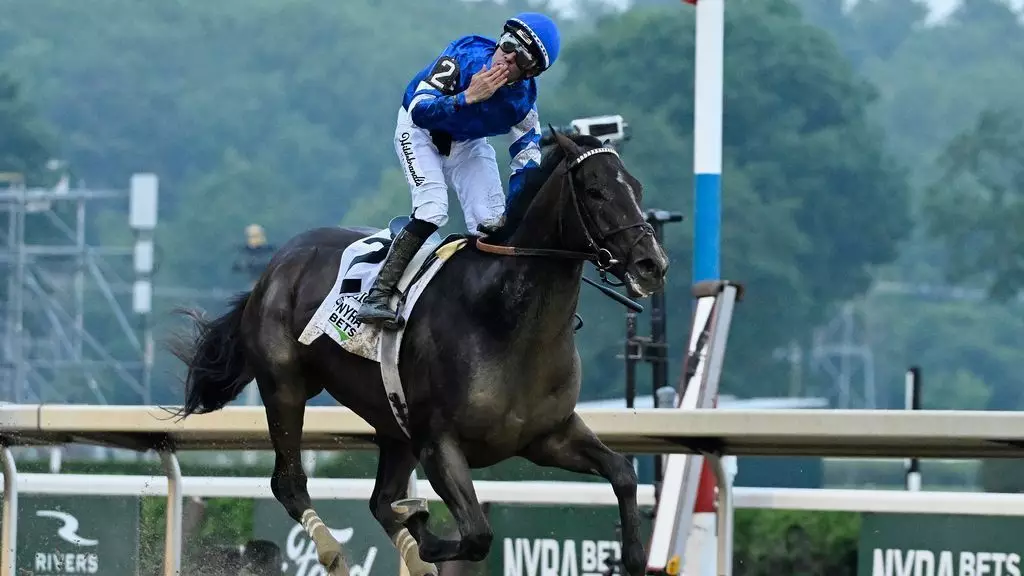The thrilling world of horse racing never fails to deliver dramatic encounters and epic rivalries, and the recent 157th Belmont Stakes was no exception. Held at the iconic Saratoga Race Course in New York, this event reignited the fierce competition between Sovereignty, Journalism, and Baeza, the formidable trio that had already made their mark on the season with stellar performances in the Kentucky Derby and Preakness Stakes. As a race that featured two of the three legs of the Triple Crown, all eyes were on Sovereignty as he aimed not just for victory, but to enhance his burgeoning legacy. With stakes high and tensions palpable, the race unfolded in a spectacle that was both thrilling and revealing.
Racing to Glory
Sovereignty’s trainer, Bill Mott, described the race as a culmination of careful planning and an unwavering commitment to the horse’s well-being. Winning the Belmont for the second time and on home soil added an extra layer of satisfaction, an emotional tug in a sport notorious for its intense rivalry and high stakes. What’s most compelling about Sovereignty’s journey is the calculated decision to forgo the Preakness Stakes, potentially sacrificing a shot at the Triple Crown. This was more than just a strategic move; it was about prioritizing the horse’s health and longevity. Mott and the Godolphin team demonstrated that true greatness is not merely about accolades but about nurturing talent for a sustainable future.
The momentous day of the Belmont saw Sovereignty burst from the gate with an impressive start, a hallmark of his races this season. Watching jockey Junior Alvarado guide him confidently through the field reminded us of the deep connection between horse and rider—an exquisite balance of instinct, skill, and experience. The striking power that Sovereignty showcased when he overtook Journalism was not just about speed; it was a bold declaration that he is here to stay.
Journalism: The Shadow of a Former Champion
Despite his strong performance, Journalism’s repeated second-place finish left an indelible mark on the race narrative. As the only horse to have competed in all three legs of the Triple Crown, his resilience is commendable, yet it also raises questions about strategy and adaptability in the ever-evolving landscape of horse racing. Was running the Preakness a mistake for Journalism, or has he simply met his match in Sovereignty? These questions linger as we examine the implications of this rematch.
Whether or not Journalism had the physical stamina to keep up with Sovereignty is unclear, but what it does reveal is the need for innovation in racing strategies that allow horses to thrive rather than merely compete. Perhaps the 2-1 favorite underestimated the modified dynamics of the racing scene and the fierce competition with a rejuvenated Sovereignty.
Calculated Risks and Horses’ Futures
The decisions made by Mott and the Godolphin team to protect Sovereignty, opting to sit out the Preakness, were a masterclass in foresight. In a world where immediate glory often trumps long-term sustainability, their choice serves as a reminder of the careful stewardship required in horse racing. It’s a perspective that centers cruelty and endurance, ensuring that horses are not merely tools for spectacle but are treated with respect that extends beyond their racing days.
The upcoming Travers Stakes looms large on the horizon, promising another thrilling confrontation. Mott’s admission that he harbors ambitions to win the Travers adds yet another layer to Sovereignty’s narrative. It reflects a genuine desire to claim a prestigious title while keeping the horse’s well-being at the forefront—a perspective all too often overshadowed by the dazzling pursuit of quick accolades in the racing industry.
A Reimagined Future for Horse Racing
The Belmont Stakes symbolizes more than just another race; it represents a transformative shift in the approach to horse racing. As we witness the intense competition between such incredible horses, the story of Sovereignty stands out not only for its triumph but for its implications on how we view athletics, health, and legacy. The Belmont reaffirmed the importance of adopting a vision where the horse’s future takes precedence over mere trophy displays.
In a sport that thrives on showcasing strength and speed, let us not forget the dignity of the creature at the heart of it all. Sovereignty’s journey from the Kentucky Derby to the Belmont is a powerful reminder that true champions aim not just for a single race but for a lifetime of achievements, both on and off the track. This ethos is crucial to the evolution of horse racing and serves as an example for other sports to follow—prioritizing long-term health and sustainable legacies over fleeting accolades and immediate triumphs.


Leave a Reply